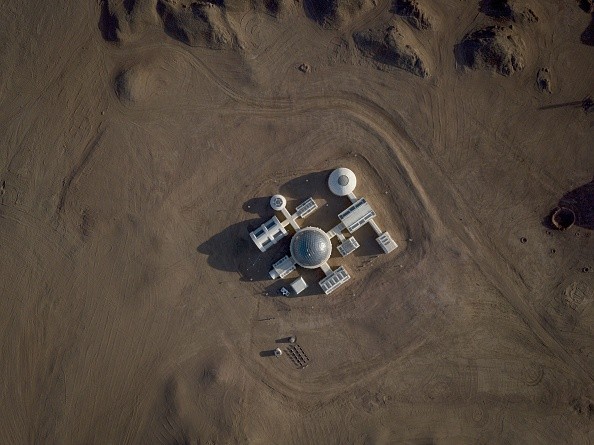NASA and SpaceX are currently the leading space agencies when it comes to making efforts for the upcoming Mars Missions. The National Aeronautics and Space Administration already visited Mars, while Elon Musk's upcoming mission to the Red Planet would be its first one.

This aerial photo taken on April 17, 2019 shows "Mars Base 1", a C-Space Project, in the Gobi desert, some 40 km from Jinchang in China's northwest Gansu province on April 17, 2019. - In the middle of China's Gobi desert sits a Mars base simulator, but instead of housing astronauts training to live on the Red Planet, the facility is full of teenagers on a school trip.
On the other hand, the popular billionaire CEO also claimed that he would start Mars colonization so that many people could ditch Earth. However, a new radiation study claims that astronauts should not stay on the neighboring planet for more than four years.
"Our calculations demonstrate that the optimal time for a flight to Mars would be launching the mission at solar maximum and that the flight duration should not exceed approximately 4years," said the researchers.
This new study about radiation shielding on the Red Planet involves various agencies from across the globe. Skolkovo Institute of Science and Technology, University of Science and Technology of China, Department of Aeronautics and Astronautics, and other space institutes to form an international team to work on the new research.
NASA and SpaceX Astronauts Mars Missions Should Be Shorter?
According to New Atlas' latest report, the new study titled "Beating 1 Sievert: Optimal Radiation Shielding of Astronauts on a mission to Mars," which was published in the Advanced Earth and Space Science Journal, warned that astronomers staying on Mars for more than four years would be endangered due to cosmic radiation exposure.

The NASA InSight spacecraft launches onboard a United Launch Alliance Atlas-V rocket on May 5, 2018, from Vandenberg Air Force Base in California. - NASA on May 5 launched its latest Mars lander, called InSight, designed to perch on the surface and listen for "Marsquakes" ahead of eventual human missions to explore the Red Planet.
Also Read: SpaceX's Inspiration4, Its First All-Civilian Launch, on Track for Sept. 15 Liftoff
However, involved space experts explained that astronauts would still be safe with the right timing and shielding. They added that cosmic radiation on the Red Planet and other heavenly bodies within the solar system varies according to the Sun's activity.
In other news, NASA Perseverance Mars Rover was able to collect rock samples from the Red Planet. On the other hand, China's Half-a-Mile-Long spacecraft could be in development.
Radiation Study's Other Details
Gizmodo explained that the involved space researchers were able to come up with their shorter Mars mission suggestion after using models of particles radiation within the solar system.
They also relied on various radiation models to identify how these cosmic rays affect human health and the state of a spacecraft in the Red Planet.
For more news updates about NASA, SpaceX, and other giant space agencies, always keep your tabs open here at TechTimes.
Related Article: SpaceX Inspiration4 Mission to Use iPhone, iPad, Apple Watch for Spaceflight Health Studies
This article is owned by TechTimes
Written by: Griffin Davis








